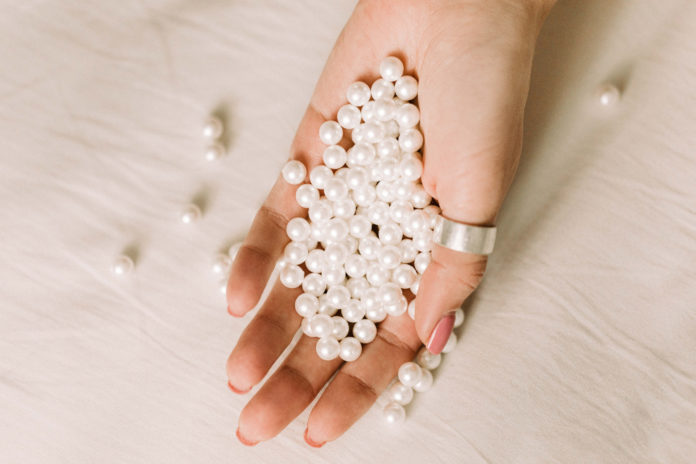Historians believe pearls are the oldest gemstone, dating back more than four millennia. Over the years, people mentioned these gems in historical and religious texts, and all sources show how much pearls have been valued throughout time. What makes pearls so coveted? A look at their rich history helps to answer this question.
Ancient History
As pearls have been around for so long, many ancient civilizations used them in a variety of ways. The following provides a brief look at the gems in ancient times.
China
The Chinese considered pearls prized possessions and would often gift the gems to members of the royal family. Chinese records first mention the gems in 2300 BC, although they may have been popular before then. The river Hwai in the King Hau province is where freshwater pearls were obtained in ancient times. Today, you can get details here and find pearl jewelry options at Adina’s Jewels.
Egypt
Egyptians in ancient times weren’t fascinated with the pearl. However, they did love the shell referred to as mother-of-pearl. It wasn’t until the 5th century BC that they considered pearls to have value, although some historians believed this happened either earlier or later than many people report. They decorated their living spaces and their bodies with mother-of-pearl and created beaded jewelry using the shells.
Greece
The Greeks, in contrast, loved pearls and featured them at many weddings. They believed the gems brought love. In the Iliad, the epic poem by Homer, readers find a description of Juno’s pearl earrings. Visitors could see a Greek necklace dating back 2,300 years at the Metropolitan Museum of New York until approximately 100 years ago when the museum opted to remove it from view.
India
Pearls appear repeatedly in ancient Hindu scripts. According to these scripts, the god Krishna was the first to discover this gem. In addition, anyone who has read the epic poem Ramayana will remember how the poem details a pearl necklace with 27 gems.
Persia
Experts believe the Persian Gulf may be home to the largest and oldest natural oyster beds, which helps to explain why this area was the primary source of pearls for Greeks. According to the Koran, pearls serve as one of Paradise’s greatest treasures, and ancient sculptures and coins in Persia often displayed pearls. The Susa necklace may be the oldest pearl necklace still around today, and it was discovered in a queen’s tomb that dates back 2,400 years. The 72 pearls in the piece are distributed over three rows, and visitors to the Louvre’s Persian gallery have been able to view it for more than 100 years now.
The Roman Empire
Ancients Romans viewed pearls as a symbol of one’s wealth and prestige. They believed these gems were fit for a god and actually decorated a marble statue of Venus with pearl earrings. However, they only accepted those earrings that were excellent, perfectly round, and large. If they didn’t meet these criteria, they weren’t used in the making of the statue. In fact, they tried to reserve the wearing of pearls for those they deemed fit, as they felt these gems were superior to all others.
Legend has it that Cleopatra once told Marc Anthony that she was able to create the most expensive dish ever to be made. This occurred during a banquet being held in Anthony’s honor, and Cleopatra supposedly removed one of her pearl earrings and dropped it in vinegar, also known as sour wine. When pearls come into contact with this liquid, they dissolve. Once the pearl in the sour wine dissolved, she proceeded to drink it and won the bet.

Pearls and Their Place in History Today
Pearls continue to have a place in history. Today, they are seen all across the globe. The following serves as a brief history of pearl jewelry in modern times.
When Spanish explorers made their way to America, they were shocked by the number of pearls they found in this new land. A story continues to circulate regarding a Native American princess who gifted freshwater pearls to Hernando de Soto, the man best known for visiting Florida to search for gold. He was among the first Europeans to cross the Mississippi River as well.
Back then, large pearl deposits could be found in rivers and lakes, and colonizers couldn’t wait to find them and send them home to England, Spain, and France. Queen Elizabeth I loved pearls. Due to the popularity of these gems, historical paintings and photos of nobles often showed them covered in pearls. They would put them in their hair, incorporate them into jewelry, and sew the gems on their clothing. One could never have too many pearls during this period in history.
When people think of people flocking to an area to find treasure, the California gold rush comes to mind. However, individuals discovered pearls in the Mississippi River in the 1800s. This led to a treasure hunt that was similar in many ways to what happened in California. Sadly, the hunt for pearls led to the death of millions of mussels. In addition, overfishing and pollution led to a drastic decline in pearls during the 19th century.
The actual pearls weren’t the only things in high demand. People wanted mother-of-pearl for buttons, so there was a big rush on mussels as well. It wasn’t until the mid-20th century that people started using plastic buttons rather than ones made from mussels. In fact, the mother-of-pearl buttons were so popular, the Mississippi River Valley was once home to 60 button factories. In addition, this area served as the country’s largest and most profitable inland fishery in 1922,
Pearl Culturing
Japanese researchers started looking for ways in the late 19th and early 20th centuries to cultivate pearls. Their goal was to boost the supply of pearls to meet increasing demand. Kokichi Mikimoto was the first to cultivate pearls successfully and remains the most famous. He used a technique William Saville-Kent, a British-Australian marine biologist, developed. Kokichi convinced buyers the cultured gems were valued just as natural pearls were, and this led to the age of pearl farming.
Within 50 years of Mikimoto’s success in cultivating the gems, anyone could afford to buy pearls. These gems were no longer the purview of the super-rich and nobility. Today, men and women of all social classes have access to these gems, and everyone should own at least one piece of jewelry with pearls.

















